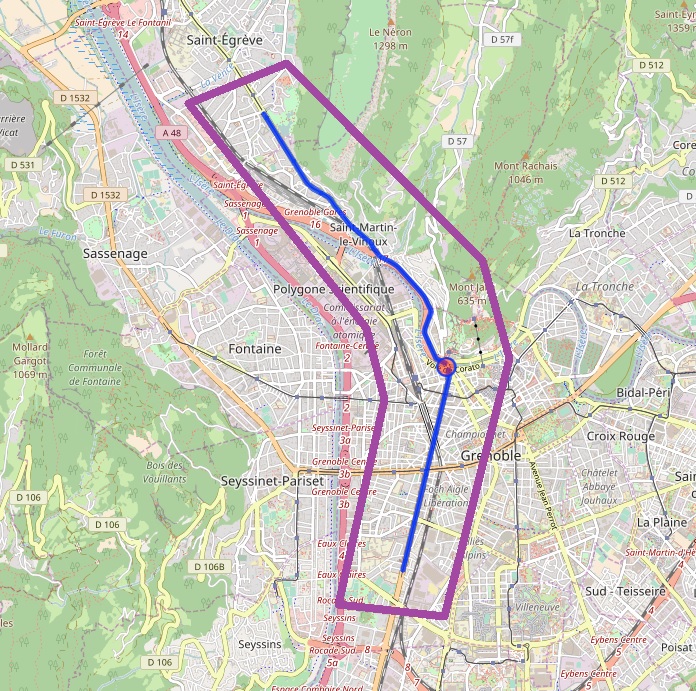Is there a way to get an area around something (a road, a bus way, ...) ? IE: "I want the area around 150m near a tram/bus/cycle way". I got this query that return all bars around the tram "Ligne E" of Grenoble (city in France). Update: If we analyse the problem with a simple 2D example :
I know how to get the way : in the query example, it's the With a concrete example, this is what I would like to have : from the blue line (a tramway), I want the purple area (around
asked 10 Feb '17, 09:51 mosmuk edited 21 Feb '17, 08:53 |
3 Answers:
Maybe you get the area with the "around" operator ? This OverPass query finds all nodes and ways within 50 meter of living streets in Rumst So you first "store" your first result in the set "streets" and then search nodes and ways around those streets. You will notice that you do no get a nice rectangle as some large areas (closed ways) have one side that is within this 50m range and they are returned as whole. This query does more or less what you want. answered 21 Feb '17, 11:24 escada |
You may want to look at https://wiki.openstreetmap.org/wiki/Overpass_API/Language_Guide#Select_region_by_polygon answered 20 Feb '17, 19:50 Hjart Thanks for the idea, but I want to know "how to get the polyline coordinate". I update my question with simple example. (21 Feb '17, 08:42) mosmuk |
Obviously, you are interested in something called - the corridor. The corridor and related apps are well known even from times long before the OSM's birth. Corridor geo-search, thick line rendering, safety monitoring, map-data preparation... are some of those applications.Very shortly: answered 22 Feb '17, 22:36 sanser It's exactly what I'm looking for. But @escada seems to say that it's not available in overpass. (23 Feb '17, 08:07) mosmuk 3 Overpass is used to retrieve OSM data, not data that can be deduced from OSM data. The corridor is not in OSM, so you cannot retrieve it with Overpass. (23 Feb '17, 12:07) escada Though, this not a discussion/argumentation place, the last comment needs some additional words. It is wrong and even (obviously)misleading. It is trivial to understand the difference between a data type and a logical shape used in application models. If an ANYpass tool-set (pretending to do spatial retrieval) does not have a corridor based retrieval model, it is just sad. But with such pretensions the ANYpass certainly contains a circle and rectangle based (the simplest) models. So, my point was that with the suggested corridor decomposition combined with the simplest spatial retrieval models anyone (even with no strong topology, polygon-algebra, programing) background could create the retrieval model (script) in the question. (01 Mar '17, 08:46) sanser |



This example returns all point of interest or way. What I really need is the coordinates of the shape around the ways (to use it with data from another database than OSM). I'm looking at whether there's a way to compute this outside the OSM queries.
AFAIK there is no way to find that box with OverPass. This is more suited for QGIS or PostGIS I think. OverPass is about finding OSM data, not finding boxes around data.